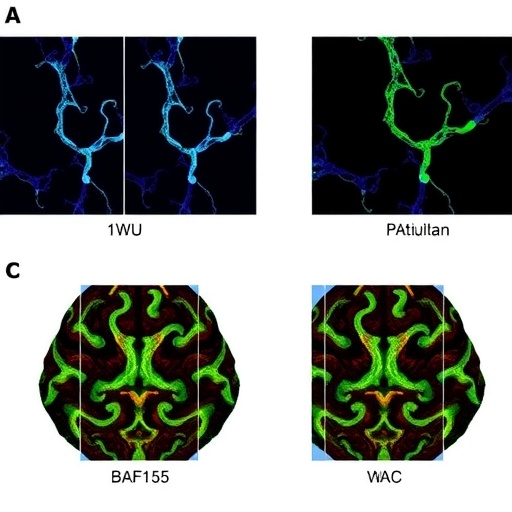Credit: Wakita D. et al., Scientific Reports. June 5, 2019
Scientists at Hokkaido University and Hiroshima University have found that green brittle stars with five arms show a different “pumping” movement pattern than those with six arms. Using a mathematical model, they have shown that such movements can be coordinated by the flow of internal body fluid alone, rather than neuronal activity. The study was published in Scientific Reports.
Animals constantly make rhythmic movements such as breathing, feeding and walking. Physiological studies and robotics have shown that neuronal activity and physical structure, respectively, are involved in coordinating those movements. However, how physical structure affects such movement in animals is unknown.
A team consisting of Hitoshi Aonuma, Daiki Wakita and Yumino Hayase studied the green brittle star Ophiarachna incrassata, a starfish-like aquatic animal found in tropic and sub-tropic oceans of the Indo-Pacific region with typically five and occasionally six arms. First, the researchers looked at five-armed brittle stars and discovered a repeated movement in five fan-shaped parts between the arms that shrink and expand, which they named “pumping.”
They found that the pumping occurred in a coordinated, asynchronous manner: movement of one part was followed by that of the second-neighbour part, not the immediate-neighbour part, in a pentagonal star.
Then, the team built a mathematical model and found that coordinated movement can be achieved by an internal fluid flow created by changing volume and pressure in each part. When the researchers altered the number of parts from five to six in the simulation, it showed changes in the pumping patterns: three second-neighbour parts shrank and expanded in unison followed by the same synchronous movements in the other three.
They observed a six-armed brittle star and confirmed that the simulation was accurate compared to the real animal. “This suggests the rhythmic movement can be coordinated without neuronal interactions between body parts. The insight could inspire future robot designs for generating coordinated movements without a complex control system,” says Hitoshi Aonuma of Hokkaido University who led the study. “Further research should investigate how different body structures affect movement patterns and how neuronal and non-neuronal activities each play a role in moving processes.”
Since pumping occurs after feeding, the team considers it a digestive process and suspects that different patterns in pumping create different flows in the animal’s intestine, possibly affecting its digestive function.
###
Media Contact
Naoki Namba
[email protected]
Related Journal Article
http://dx.




